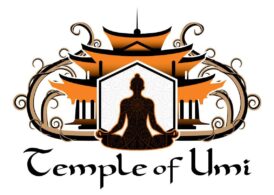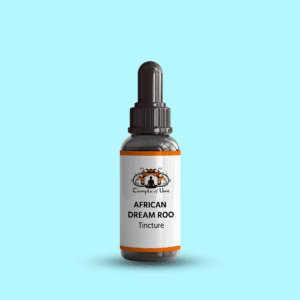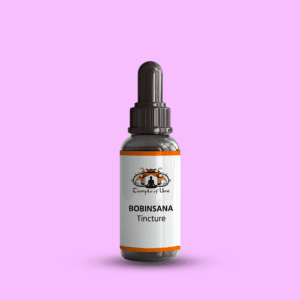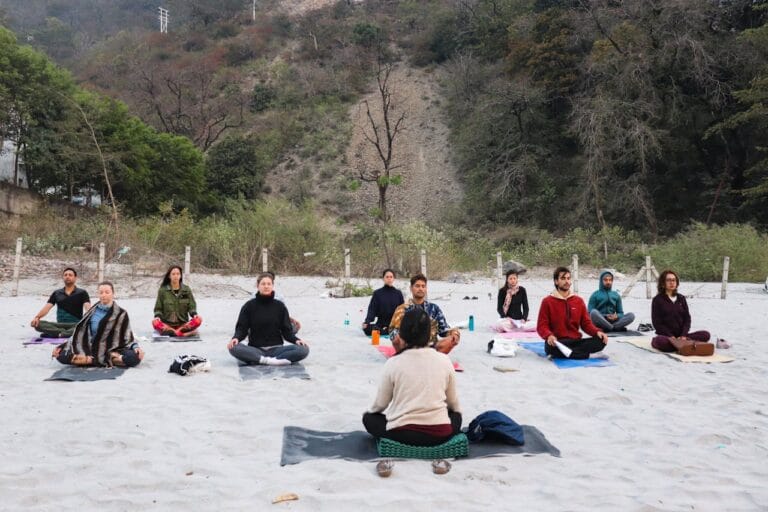The Essential Guide to Ayahuasca Preparation

By Temple of Umi

Table of Contents
Discover the importance of therapeutic integration after a retreat. Learn how it can help you maintain long-term healing and personal growth with expert tips for effective integration.
Therapeutic Integration: A Key to Unlocking Lasting Healing After Retreats
Retreats, particularly those involving transformative experiences like ayahuasca ceremonies or other spiritual practices, often serve as profound turning points in people’s lives. The deep healing, self-awareness, and emotional breakthroughs during these experiences can be life-changing. However, without proper integration, the long-lasting benefits of these retreats may not fully materialize. This is where therapeutic integration comes into play.
Therapeutic integration incorporates insights, experiences, and emotional shifts gained during a retreat into your daily life. It helps bridge the gap between the retreat experience and real-world application. In this blog post, we will explore the concept of therapeutic integration, why it is essential, and practical strategies for achieving it.
Understanding Therapeutic Integration
At its core, therapeutic integration is a way to help individuals make sense of and apply the insights and lessons learned during a healing retreat. It is about reflecting on the experience and embedding the changes into one’s life, creating sustainable shifts that lead to personal growth, emotional balance, and healing.
Without integration, individuals may struggle to maintain the clarity or peace they achieved during their retreat. Sometimes, retreat participants return to their daily lives only to find that old habits, fears, and emotional patterns re-emerge. Therapeutic integration addresses this issue by providing the structure and support needed to weave the retreat experience into one’s ongoing journey. Learn more.
Why Therapeutic Integration Is Crucial
Bridges the Gap Between Experience and Everyday Life One of the most important aspects of therapeutic integration is that it helps participants translate their retreat experience into practical steps for life. Without integration, it can be easy to lose the sense of transformation once the retreat ends. Therapeutic integration acts as a bridge, ensuring that the growth and healing achieved are sustainable in the long term.
Encourages Emotional Processing Retreats often trigger powerful emotional reactions, whether they are related to past trauma, unresolved feelings, or suppressed emotions. Therapeutic integration provides a safe space to process these emotions gradually. This might involve journaling, therapy sessions, or meditation. The goal is to allow individuals to acknowledge, express, and work through these emotions so they can heal and move forward.
Helps with Navigating Challenges While retreat experiences can be transformative, returning to everyday life can bring unexpected challenges. Therapeutic integration enables you to prepare for and navigate these challenges by providing tools and techniques for maintaining emotional equilibrium. It equips you with coping strategies that are essential for managing stress, anxiety, and other emotional fluctuations that may arise after the retreat.
Fosters Long-Term Healing True healing is an ongoing process. Without integration, the profound shifts achieved in a retreat might only last for a short time. Therapeutic integration nurtures the foundation for long-term healing by supporting continued growth and encouraging you to stay connected to the insights gained during the retreat. Over time, these new habits and ways of thinking become ingrained in your daily life.

How to Approach Therapeutic Integration
Now that we understand why therapeutic integration is essential, let’s explore practical ways to approach it effectively.
Create a Routine for Reflection
After your retreat, set aside time each day or week to reflect on your experience. This could be through meditation, journaling, or simply sitting silently to process your thoughts. Write down key insights and emotional shifts that you experienced during the retreat. Reflect on how they relate to your life and what steps you can take to embody them.
Example: Start each morning by journaling for 10-15 minutes, focusing on how you feel and what lessons from the retreat are still resonating with you.
Seek Professional Support
Integrating the experience can be challenging so that professional support can be invaluable. Whether you work with a therapist, a spiritual guide, or a retreat facilitator, having someone experienced in integration can provide structure and accountability. These professionals can help you make sense of your experiences and offer personalized advice for moving forward.
Example: Schedule regular therapy sessions post-retreat to discuss your emotional journey and receive guidance on integrating your newfound awareness.
Stay Connected to Your Retreat Community
Many people find staying in touch with others who attended the same retreat beneficial. Sharing experiences and continuing to offer mutual support can help you process your experience. Group integration calls or community gatherings can foster a sense of belonging and remind you that you’re not alone in your journey.
Example: Organize monthly check-ins with fellow retreat participants to share progress and offer support.
Implement Mindfulness Practices
Mindfulness practices like meditation, yoga, and breathing exercises effectively maintain the clarity gained during a retreat. Regular mindfulness practices can help you stay grounded, reduce stress, and promote emotional well-being. Incorporating mindfulness into your daily routine helps to reinforce the emotional and spiritual shifts you experienced during the retreat.
Example: Begin and end each day with a mindfulness practice, even if it’s just five minutes of deep breathing or body scanning.
Set Clear Intentions
After the retreat, you must set clear intentions for how you want to move forward. Therapeutic integration involves identifying specific actions you can take to apply what you’ve learned. This might include setting personal goals or deciding on certain habits to adopt that align with the growth you’ve experienced.
Example: Set a goal to practice gratitude daily or commit to a specific change, such as healthier eating or better time management.
Embrace Patience and Self-Compassion
Integration takes time. It’s important to remember that growth is not always linear, and setbacks may occur. Be patient with yourself and practice self-compassion as you work through challenges. Healing is a process, and embracing it with kindness toward yourself is vital to the integration journey.
Example: Celebrate small wins along the way, such as when you successfully apply a lesson from the retreat to your daily life.
Challenges in Therapeutic Integration
Despite its importance, therapeutic integration is not without its challenges. The excitement and clarity experienced during the retreat may fade when faced with the demands of daily life. Additionally, old emotional patterns and thought processes can resurface, causing confusion and frustration.
If you struggle, don’t hesitate to reach out for additional support. Seek a therapist or coach specializing in post-retreat integration, or continue engaging in your retreat community. The key is to remain committed to the process and trust that healing is unfolding, even if it doesn’t always feel that way.

Determination
Therapeutic integration is the critical step in ensuring that the healing and insights gained from a retreat continue to shape your life positively. By practicing patience, reflecting on your experience, and seeking the support you need, you can make lasting changes that improve your emotional, mental, and spiritual well-being. Remember, therapeutic integration is not a one-time event but an ongoing process that unfolds over time, helping you embody the lessons learned and continue your journey of healing and growth.
Useful links
- What is Sacred Plant Medicine?
- Embark on a Journey of Transformation with Spiritual Healing
- Unveiling Healing Energy at the Temple of Umi
- 10 Energy Healing Techniques to Transform Your Life
- Where to get Sacred Plant Medicine Retreat in the USA
- Top Plant medicine retreats in the USA. Learn more.
- Cost of Plant Medicine Retreat: Balancing Cost and Experience. Learn more.
- What is trauma bonding?
- A Journey into the Healing Properties of Psychedelic Mushrooms. Learn more.
- Plant Medicine Retreat Georgia – Experience Spiritual Awakening
- Spiritual Retreats Georgia
- Shaman in America Exploration
- Shamanism – Shamanic healing
- Shaman Healing Guide
- Plant Medicine ceremonies near you in the USA
- Plant Medicine Experience
- DMT Journey, Benefits, and Side Effects
- Iowaska – What is it?
- Plant medicine retreats in Georgia
- Why massage is beneficial, according to a cardiologist.
- Are mushrooms truffles – What Is a Truffle?
- 11 Best Plant Medicine Retreats in the USA for Spiritual Healing
- What is Rapé?
- Sacred Plant Medicine Retreats in Georgia
- 5 Ayahuasca Retreats in California Worth Exploring
- 7 Best Aya Retreats in America. Click here.
- Mcdonough Ayahuasca retreat
- Conley Ayahuasca retreat
- Whitesburg Ayahuasca retreat
- Brooks Ayahuasca retreat
- Gay Ayahuasca retreat
- Williamson Ayahuasca retreat
- Orchard Hill Ayahuasca retreat
- Glenn Ayahuasca retreat
- Luthersville Ayahuasca retreat
- Shady Dale Ayahuasca retreat
- Bowdon Junction Ayahuasca retreat
- Sargent Ayahuasca retreat
- Greenville Ayahuasca retreat
- Lovejoy Ayahuasca retreat
- Winston Ayahuasca retreat
- Rutledge Ayahuasca retreat
- Moreland Ayahuasca retreat
- Molena Ayahuasca retreat
- Lebanon Ayahuasca retreat
- Good Hope Ayahuasca retreat
- Haralson Ayahuasca retreat
- An Inclusive List of Psychedelic Quotes
- Mount Ayahuasca retreat
- Grantville Ayahuasca retreat
- Pine Lake Retreat near
- Rydal Ayahuasca retreat
- Porterdale Ayahuasca retreat
- Waco Ayahuasca retreat
- Temple Ayahuasca retreat
- Bethlehem Ayahuasca retreat
- Jenkinsburg Ayahuasca retreat
- Adairsville Ayahuasca retreat
- Red Oak Ayahuasca retreat
- Woodbury Ayahuasca retreat
- Cassville Ayahuasca retreat
- Redan Ayahuasca retreat
- North Decatur Ayahuasca retreat
- Grantville Ayahuasca retreat
- Hillsboro Ayahuasca retreat
- Jackson Ayahuasca retreat
- Braselton Ayahuasca retreat
- Zebulon Ayahuasca retreat
- Flovilla Ayahuasca retreat
- Auburn Ayahuasca retreat
- Warm Springs Ayahuasca retreat
- Scottdale Ayahuasca retreat
- Lithia Springs Ayahuasca retreat
- Villa Rica Ayahuasca retreat
- Grayson Ayahuasca retreat
- Sunny Side Ayahuasca retreat
- Senoia Ayahuasca retreat
- Locust Grove Ayahuasca retreat
- Chamblee Ayahuasca retreat
- Fairburn Ayahuasca retreat
- Snellville Ayahuasca retreat
- Monticello Ayahuasca retreat
- Union City Ayahuasca retreat
- Tallapoosa Ayahuasca retreat
- Bremen Ayahuasca retreat
- Hampton Ayahuasca retreat
- Monroe Ayahuasca retreat
- Marble Hill Ayahuasca retreat
- Madison Ayahuasca retreat
- Dawsonville Ayahuasca retreat
- Felton Ayahuasca retreat
- Concord Ayahuasca retreat
- Mansfield Ayahuasca retreat
- Taylorsville Ayahuasca retreat
- Roopville Ayahuasca retreat
- Turin Ayahuasca retreat
- Franklin Ayahuasca retreat
- Clarkdale Ayahuasca retreat
- Talking Rock Ayahuasca retreat
- Jersey Ayahuasca retreat
- Kingston Ayahuasca retreat
- Bostwick Ayahuasca retreat
- North Metro Ayahuasca retreat
- Meansville Ayahuasca retreat
- Social Circle Ayahuasca retreat
- White Ayahuasca retreat
- Rhode Island Ayahuasca retreat
- Maryland Ayahuasca retreat
- Delaware Ayahuasca retreat
- New Jersey Ayahuasca retreat
- Connecticut Ayahuasca retreat
- Massachusetts Ayahuasca retreat
- Hampshire Ayahuasca retreat
- Pennsylvania Ayahuasca retreat
- New York Ayahuasca retreat
- Florida Ayahuasca retreat
- South Carolina Ayahuasca Retreat
- North Carolina Ayahuasca Retreat
- West West Virginia Ayahuasca retreat
- Virginia Ayahuasca retreat
- Ohio Ayahuasca retreat
- Alabama Ayahuasca retreat
- Mississippi Ayahuasca retreat
- Tennessee Ayahuasca retreat
- Kentucky Ayahuasca retreat
- IndianaAyahuasca retreat
- ILLINOIS Ayahuasca retreat
- Missouri Ayahuasca retreat
- Arkansas Ayahuasca retreat
- Louisiana Ayahuasca retreat
- Texas Ayahuasca retreat
- Oklahoma Ayahuasca retreat
- KansasAyahuasca retreat
- Ayahuasca retreats near me in Experiment.
- A wellness retreat in Georgia
- What is Ayahuasca?
- Embark on a Journey of Transformation with Spiritual Healing
- Unveiling Healing Energy at the Temple of Umi
- 10 Energy Healing Techniques to Transform Your Life
- Where to get Ayahuasca in the USA
- Top Ayahuasca retreats in the USA. Learn more.
- Cost of Ayahuasca Retreat: Balancing Cost and Experience. Learn more.
- What is trauma bonding?
- A Journey into the Healing Properties of Psychedelic Mushrooms. Learn more.
- Ayahuasca Retreat Georgia – Experience Spiritual Awakening
- Spiritual Retreats Georgia
- Shaman in America Exploration
- Shamanism – Shamanic healing
- Shaman Healing Guide
- Ayahuasca ceremonies Ayahuasca ceremonies near you in the USA
- Ayahuasca Experience
- DMT Journey, Benefits, and Side Effects
- Iowaska – What is it?
- Plant medicine retreats in Georgia
- Why massage is beneficial, according to a cardiologist.
- Are mushrooms truffles – What Is a Truffle?
- 11 Best Ayahuasca Retreats in the USA for Spiritual Healing
- What is Rapé?
- What is a Tincture?
- Where to find Ayahuasca near me
- Healing retreats USA
- Best Retreats USA









